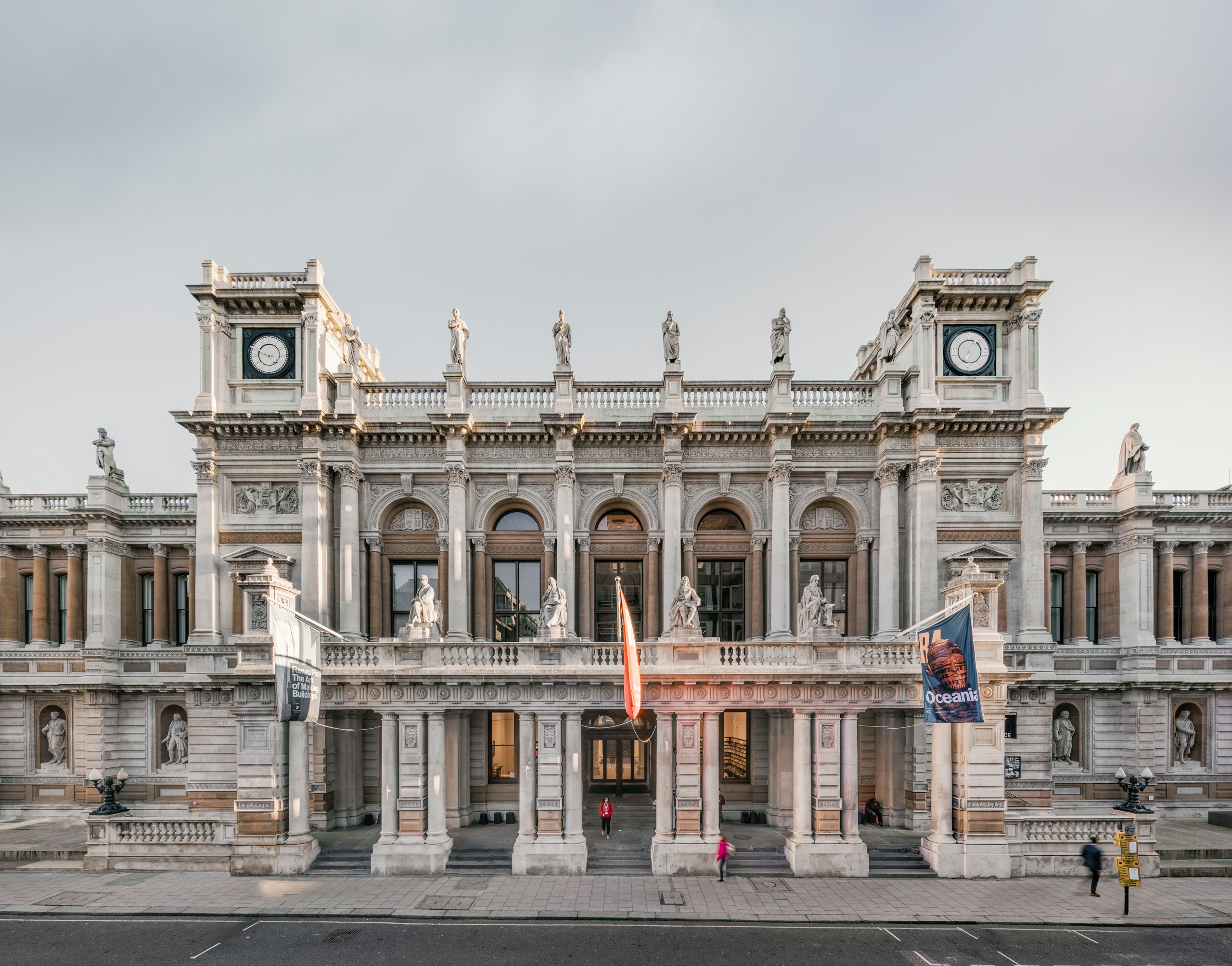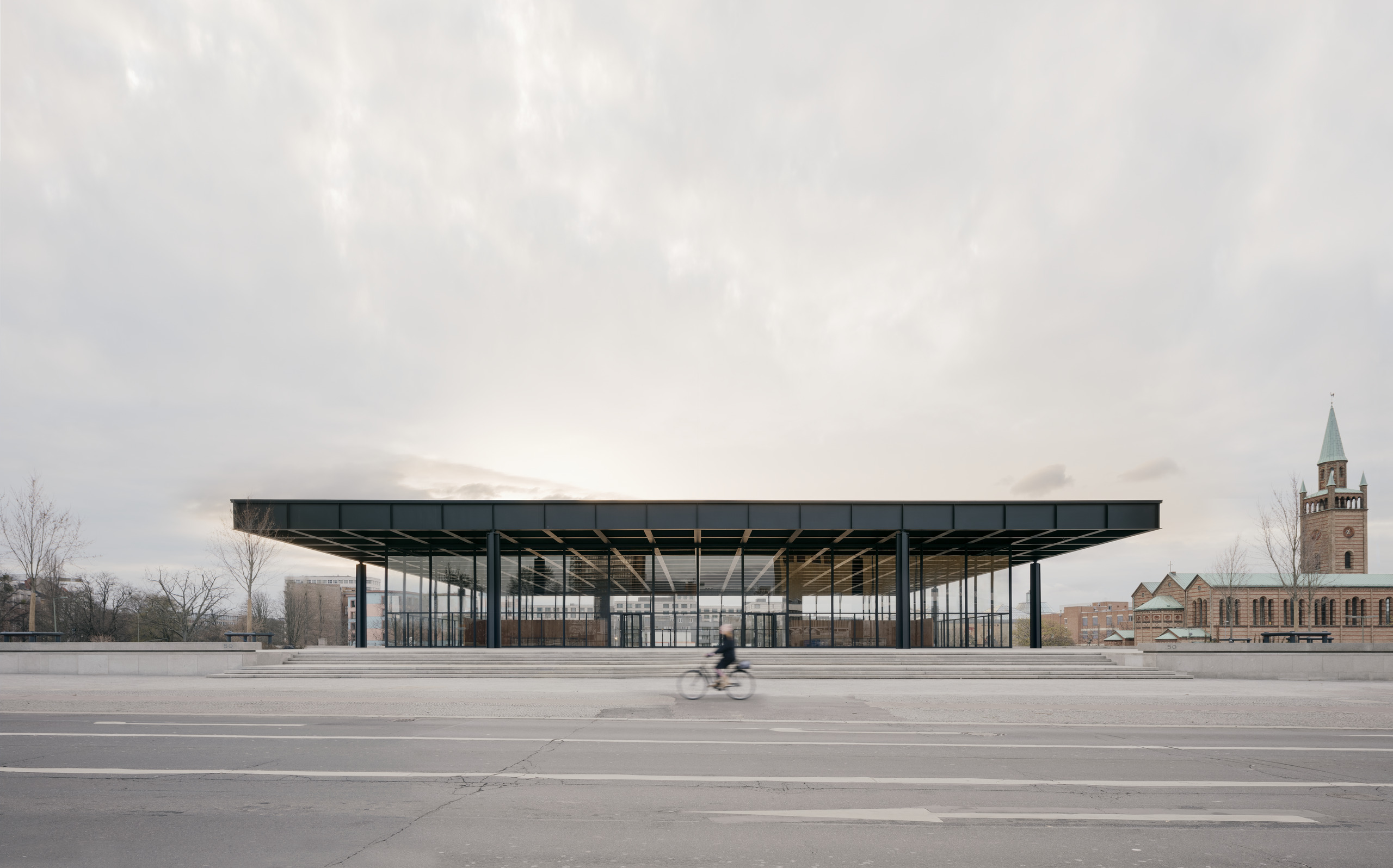Since I became Director of Haus der Kunst in 2011, I have learned that any discussion of the architectural heritage of the Third Reich in Germany leaves no doubt as to the effects of the prickly material of Nazi history: what it does to memory; the feelings of uneasiness; the wounding of conscience; the quickening of emotions. The current debate surrounding the proposed renovation plans of Haus der Kunst by David Chipperfield has kindled such reactions by those who perceive in the building's implacable façade a stone gorgon waiting to devour the memories of its Nazi past. In the ensuing debate about the merits of Chipperfieldâs highly sensitive, restrained, and intelligent renovation concept a sense of ahistorical confusion reigns; facts are elided, while projections and fantasies become elevated into architectural discourse.
Take the example where architecture students from the Technical University of Munich were given a design exercise to reimagine the building. As they concentrated on the task to rework the building, their proposals bear little relevance to the needs of the museum, nor reflection on the relationship between history and memory. Accompanying these published design sketches, careless talk was proffered by critics who stated that Chipperfield seeks to restore the building to its original state of 1937. This risible idea is, of course, neither the intention of the renovation plan nor what Chipperfield actually stated during his public presentation of his ideas at Haus der Kunst in September 2016. However, the ensuing discussion of his plans have actually obscured some of his core assumptions -- firstly, that the building as a protected historical monument needs to be repaired, upgraded, and cared for. Secondly, in purely architectural terms, he sees nothing wrong with the building as such. Without neglecting its architectural past, he made clear that the building survived World War II intact, and, since 1946, has been programmed successfully in direct and deliberate repudiation of Nazi ideology.
These sober assessments notwithstanding, we are willing to further engage public discussions of the renovation, if only to clarify some of the distortions being circulated about it. Two photographs will serve as our guide. The first was taken in 1937, an impression of a leafy, undisturbed urban residential scene with its pitched and flat roofs. In the right of the image is the newly built Haus der Deutschen Kunst in all its colonnaded splendor. Contrast this with an aerial view of the same area from June 1945 of a small section of the neighborhood in the month following the end of World War II. In this second picture, in every direction, a scene of macabre destruction unfolds: blocks of destroyed buildings, and a landscape pock-marked by bomb craters. In the midst of this survey of ruin and destruction sits the Haus der Deutschen Kunst, isolated but miraculously unscathed, ghostly in its grayish bulk against the blackened gloom. From todayâs vantage point, further scrutiny of these two pictures points to the radical restructuring that this area has undergone as part of postwar urban redesign. Today, nothing is like it was when the building was inaugurated. Ravages of war and postwar urban planning have created completely different points of view. Roads have been widened, tunnels constructed, and traffic flow altered so dramatically as to afford an entirely different visual perspective. There is no way that the situation as it was between 1937 and 1945 can be replicated today. In fact, the building appears even more visible than before, especially from the southwest orientation.Â
To reach a successful and intelligent solution for the renovation, critical questions must be addressed that incorporate both historical and contemporary appraisals of urban development around the museum. For example, was the row of trees in front of the building planted to conceal it from view? And if so, why and from whom? From the same local inhabitants who grew up visiting it during the Third Reich? Or from future generations, out of shame? To consider the situation logically, it is clear that the row of trees serves no real concealing function, except, perhaps as placebo. The building, if hidden at all, is hiding in plain sight.
The second feature of the discussion of the exterior concerns the wide steps that used to run the length of the front of the building and which were removed during the construction of the tunnel. Chipperfield wants to consider restoring the steps because they make sense from an architectural point of view. Moreover, he observed that restoring them is one way to further integrate the building into the urban context of Munich from which it is currently isolated. This sensible proposal also raised the hackles of critics who somehow misunderstood the architect's proposition. But is it as popular folklore would have it, that the removal of the steps were part of a conscious plan of architectural de-Nazification? Or was it part of a more complex urban redevelopment plan in which the building's street frontage was appropriated for the widened thoroughfare that now exists in front of it? Perhaps, it is a combination of all these points.
Nevertheless, looking back at the two photographs and reflecting on the current discussions, one cannot help but speculate that the greatest misfortune to have befallen Haus der Kunst as part of the trio of buildings (including the FĂźhrerbau and NSDAP Centre) designed by Paul Ludwig Troost under Hitler's patronage, was to have survived the aerial bombings of Munich completely intact.
Had the building been either destroyed or severely damaged during the air raids, perhaps the current debate about its architectural status would be moot. Given its history, undeniably the building evokes traumatic memories in many people.
And thus, its present is bound up in a politics of memory. Therefore, it seems utterly reasonable that a certain cult of memorial vigilance should accompany discussions on the future of the architecture, especially on the collective understanding of its cultural meaning as a center for global art today. But at what point should we put these debates behind us? After eighty years of continuous use as an exhibition center in which the building has remained virtually unchanged, the discussion that we must pursue is how to further integrate this building and the institution that it houses into Munich's rich cultural fabric.
Since 1946, Haus der Kunst has been one of the most assiduous symbols of cultural rectitude with regard to its past. This has been largely due to the work of artists featured there in hundreds of exhibitions -- for example, Picassoâs great anti-fascist painting Guernica (1937) exhibited there in 1955; or Joseph Beuysâ sculptural installation The End of the Twentieth Century (1983-85), which was shown in 1984 in the Staatsgalerie Moderner Kunst (located in the west wing). From the publications on the history of the building initiated by Christoph Vitali, to Chris Derconâs âCritical Reconstructionâ; the establishment of a database on the âGreat German Art Exhibitionâ; the 75th anniversary exhibition âHistories in Conflict: Haus der Kunst and the Ideological Uses of Art, 1937-1945â, to the recently installed Archive Gallery and the current exhibition âPostwar: Art Between the Pacific and the Atlantic, 1945-65,â we have directly confronted the building's legacy. And in recent years, artists have intervene directly in the building itself, as in projects by Christian Boltanski, Gustav Metzger, and Mel Bochner.
Bochnerâs semi-permanent monumental frieze, Joys of Yiddish, which he recently donated to the museum, was installed nearly four years ago on the façade of the building on the occasion of his retrospective, as a critical intervention in the historical memory of the building. The work comprises a list of Yiddish words inscribed in yellow script against a black ground, recalling the armbands with the yellow star of David on a black background that the Nazis forced Jews to wear in the 1930s and 1940s. By running the text in a horizontal band across the entire width of the buildingâs upper façade on Prinzregentenstrasse, Bochner, a Jewish artist, sought not only to intervene in the âtemple of German Artâ, but to visibly illuminate the tragic disappearance of the Yiddish language from German cultural life.
The critical vigilance with which the successive leadership of Haus der Kunst has positioned it as a future-oriented institution underscores the clear mandate of transforming the building into a showcase of powerful modern and contemporary art. I strongly believe that these interventions should be led by the work and vision of artists, rather than by architectural gestures that may prove susceptible to rapid obsolescence.
And yet, despite the bold initiatives that have been carried out over the last seven decades to reposition the museum and transform it into a respected and admired contemporary institution of international stature, it is essential that we maintain a serious rapport with its historical memory. The urgent issue to be raised is how we understand Haus der Kunst -- past, present, and future. The map of the world is radically different from 1937 and 1945. Globalization has fundamentally reshaped geopolitical coordinates, while mass migration and digital technologies are remaking contemporary identities, linking them by vectors of exchange and sharing.
What do these transformations mean for an art museum operating in Germany in the twenty-first century? How should museums respond to the volatile changes that are currently reshaping our view of the contemporary world? With what tools must museums reflect and transmit their core mission to audiences within the shifting realities of today? What are the aesthetic, discursive, and programmatic imperatives for organizing and managing our thinking around change? Engaging these questions productively is the heart of our current project: Renovate/Innovate. This banner challenges us to construct a reflexive contemporary museum of the twenty-first century, an open public space of cultural vitality in the present. Today, there is nothing more urgent and compelling than to create a potent place of social imagination that operates with confidence in support of the future of art.


